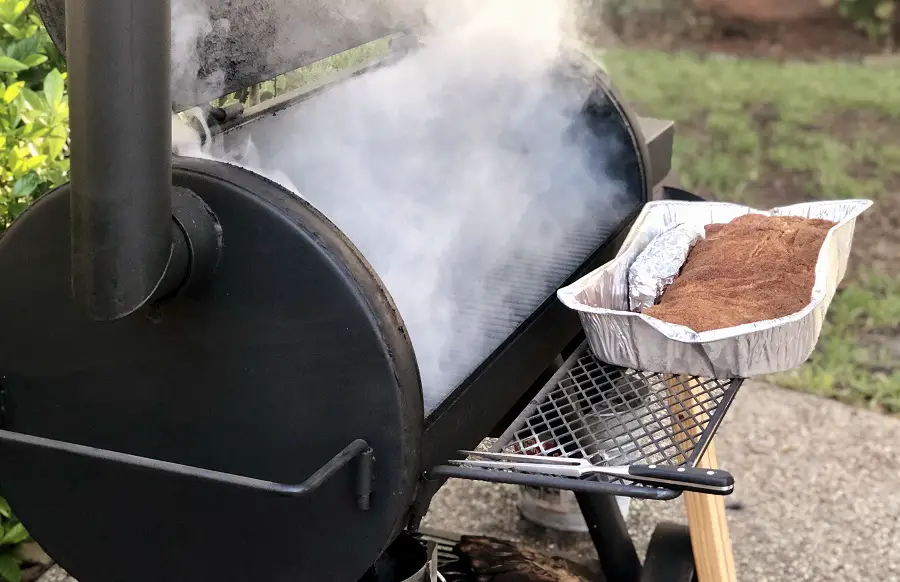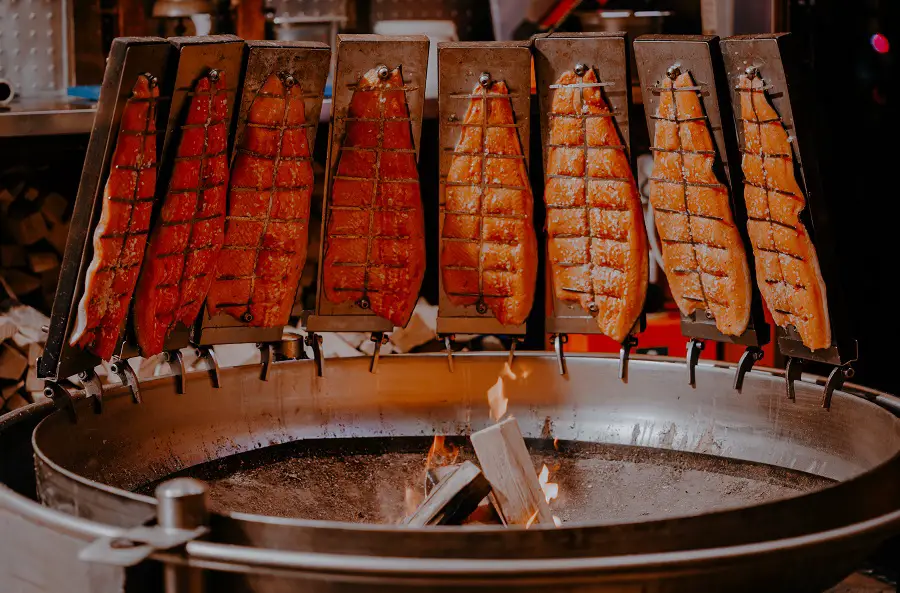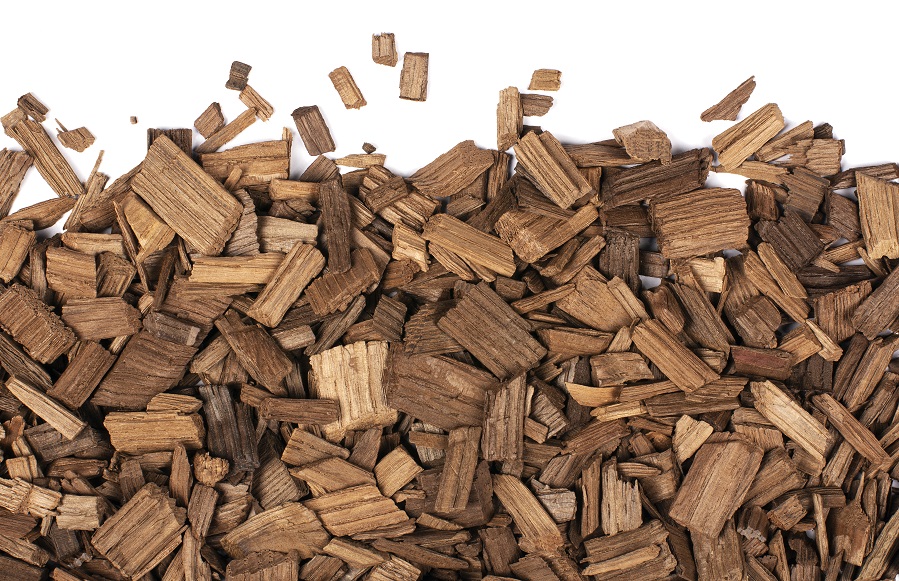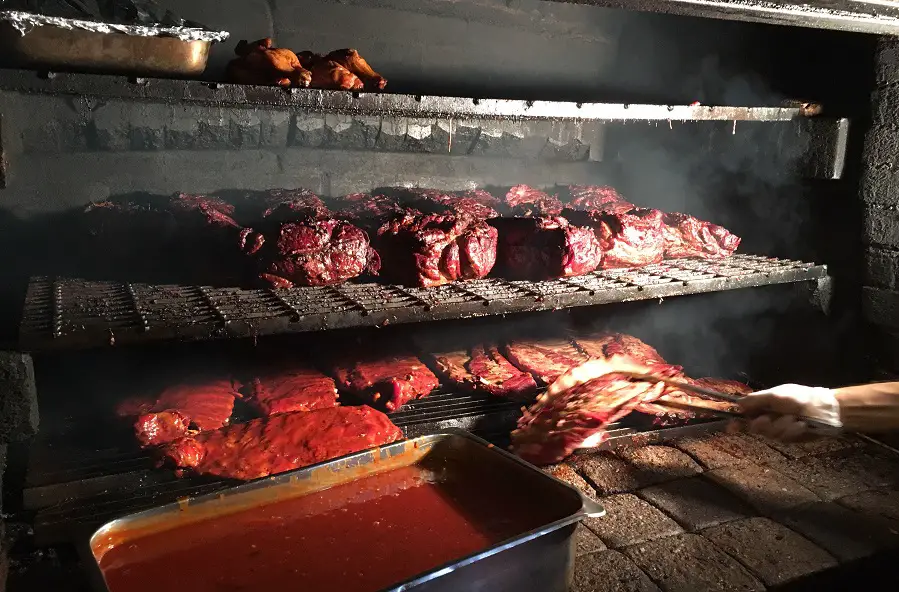Pork, beef, duck, trout and cheese specialities taste great when smoked and are a delight to eat with friends and family. As well as the added flavour and colour, smoke also helps preserve or cook food. But can we use any kind of wood? Does wood need to be dried or is green wood good too? How does smoke affect the taste of meat? Is hot or cold smoke better? These and other questions are answered below.

Why and how to smoke food
Smoking food has been used since the Palaeolithic, practically since fire was discovered, to preserve meat for longer. Cold smoke contains certain chemicals with an antimicrobial effect, so smoked meat or fish could be used for a long time. Hot smoke also helps to cook meat and fish slowly and, combined with the addition of salt, increases the time they can be eaten safely.
Using smoke for preservation, over time its influence on the taste of the food was also discovered. Not all species taste the same, some are more suitable for pork, others for poultry or fish, and others give an unmistakable taste to vegetables. Smoking time, smoke intensity, smoke temperature all influence the final taste. So smoking food has slowly moved from preservation to the art of cooking.
In our country, smoking sausages, meat, pastrami or bacon is part of the tradition. In the attic of the house or in specially built smokehouses, peasants used the smoke to preserve the meat of the slaughtered animal for as long as possible. Hot or cold smoke (up to 40°C) was used to prevent the fat from melting, ensuring distance between the fire source that produced the smoke and the place where the meat was hung. Gradually, smokers evolved, and now the smoke captured by the pipes is passed through cooling zones before reaching the meat. The meat is hung in such a way that the pieces do not touch so that the smoke can penetrate everywhere.
Smoke can taste very good, but if overdone the meat can become bitter and unpleasant to the taste. That is why it should be left for a limited time depending on how intense you want the taste to be. This time is usually determined by trial and error and experience gained over time. Experience also determines which species is more suitable, whether to use a single species or a mixture, the size of the wood or its moisture content.
Smoking for taste is now mostly done in covered grills which allow much better control of all the factors involved. Wood chips are used that are placed further away from the fire so they don't burn. Generally, dry chips are used at first to start the fire, then wet chips are added to burn more heavily and release smoke. The chips are placed in a special metal box or a perforated aluminium foil. The temperature is set at 30-35°C for cold smoking or 70-90°C for smoking combined with cooking. The whole process can take several hours.

Wood species suitable for smoking
As smoking has become an art, over the years different species of wood have been tested and it has been discovered which type of smoke is best suited for meat, fish or vegetables. Deciduous wood is used, not resinous which makes meat or fish taste bitter. The smell and taste of smoke can be mild, medium or strong, fruity or woody, harsh or mild. It can enrich the taste with a unique flavour or come with a burst of flavours.
It's true that we are each to our own taste, but we get to the desired taste more quickly if we start from information that has been checked beforehand. That's why it's good to know that trout, seafood, white meat, fruit and vegetables go well with glight, fine smoke made from beech, maple, pear, apple or plum. Poultry, pork, fish, cheese and vegetables get a special taste if you use medium smoke given by apple, apricot, cherry and maple wood. Smoked chilli pepper with maple makes a highly prized smoked paprika. Beef, mutton, lamb, game and fatty fish (salmon, mackerel) need strong smoke oak, chestnut or juniper. The smoke from the wood also fits very well. oak barrels in which Cabernet wine or whisky has been aging.
Below are some examples of species and the taste given to smoked foods:
- arin - mild flavour suitable for fish and poultry;
- apple - mild and sweet aroma. For poultry, pork, lamb, seafood. The skin of poultry smoked with applewood turns brown;
- peach, peach, hair - sweet and mild taste suitable for pork, poultry, fish;
- cherry - Slightly sweet and sour flavour suitable for any kind of meat. The most used wood for smoking. Beware of bitter cherry, whose flavour is much stronger, so the time should be short and the wood in small quantities;
- fag - strong and rich taste. One of the species commonly used for smoking pork, poultry, game;
- frasin - sweet, unique flavour. Pork and poultry;
- maple - fruity aroma similar to that of fruit trees. Poultry, pork sausages, fish, vegetables;
- dud - sweet aroma very similar to apple. Poultry, pork, fish and seafood;
- oak - strong, very rich aroma. Beef, mutton, lamb;
- plum - fruity, sweet, very pleasant aroma. Poultry, pork;
- nuc - Very strong and rich flavour with the risk of leading to bitterness and astringency. Used in mixtures with other species. Beef, sheep
- fig tree - sweet and floral aroma with a hint of cinnamon. Pork, poultry, fish and seafood, cheese, vegetables. Does not go with lamb or beef. CAUTION, the wood must be very well oiled to avoid latex, a toxic product. Learn more about fig wood here
- Vine - acidic, fruity smoke that can become heavy. Use sparingly for beef or lamb.
It is not recommended for smoking resinous wood (because of the resins and gums it contains), elm wood and that of birch.

Tips for quality smoking
Choose the right wood for the meat you want to smoke. The principle is that flavours complement each other, not cover each other. Start with smaller amounts of wood and reduced time. Extra flavor can be added by extending the time, but cannot be removed if a lot of smoke has been used for a long time.
Mix several species to get the richest taste. Mix only the right species for the type of meat being cooked. Start with small quantities and juggle with the percentages.
Don't use a lot of wood and make sure the smoke is not excessive. As pleasant as the flavour is, too much can spoil the taste of the meat.
Use good quality wood. If you use sawdust, keep it in a damp place where air can circulate so it doesn't mould. Do not use mouldy or lumpy sawdust. Sawdust must not come from mechanical processing where there is a risk of it coming into contact with oils. Do not use sawdust. The chain can transmit oil to the wood. Wood must be free of nails, glue, varnish or stains. Do not use wood that is diseased, attacked by fungi or insects.
Use wood chips specially prepared for smoking. They are commercially available, of good quality and you will be sure of a successful operation. If you don't use all the wood, reseal the bag to avoid mould.
Put the wood directly on the fire if you want fast smoking. In this case the exposure time must be short.
For long smoking put the chips next to the fire and after ignition, use wet chips (moistened with water) so that the smoke emission is long-lasting.

I hope you find the information interesting. If you have smoked meat, fish or vegetables using other species of wood, please write about your experience below in the space provided. We will complete the article with this information and the result will be a complete and useful material for everyone.






























Can wood bark be used? I smoke with plum. Is wood with bark recommended or is it better without? Someone told me to remove that bark.
Wood without bark is recommended. There are tannins, oils and substances in the bark that can alter the taste.